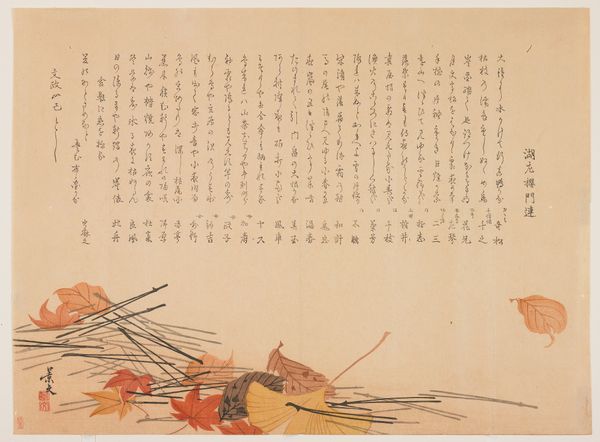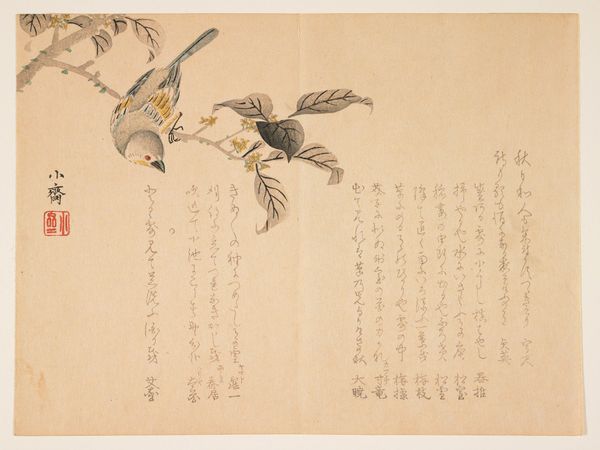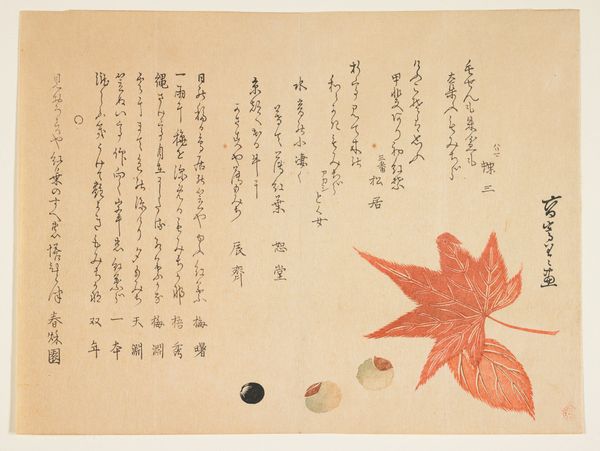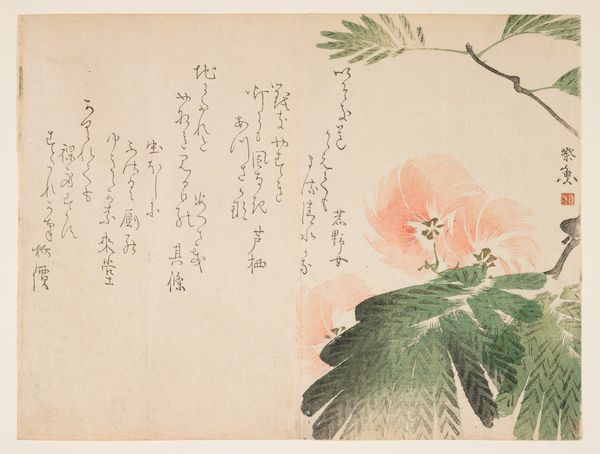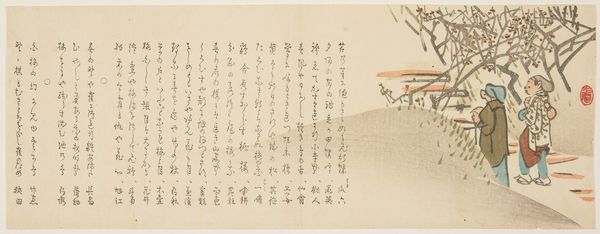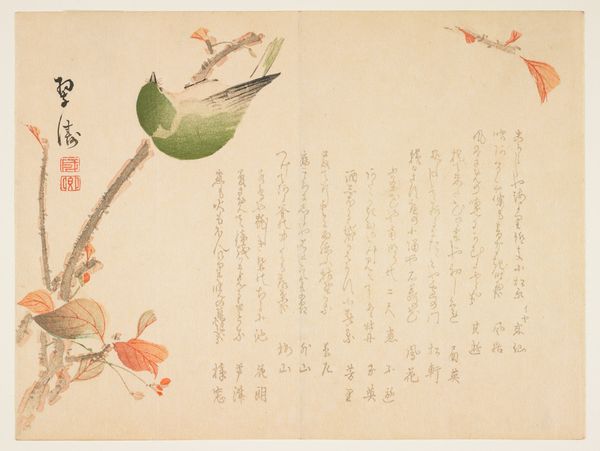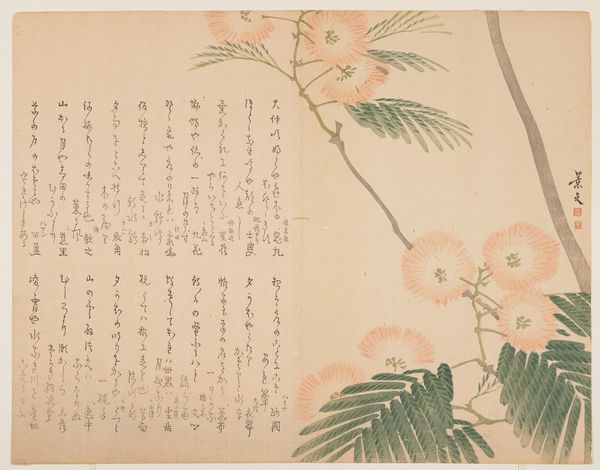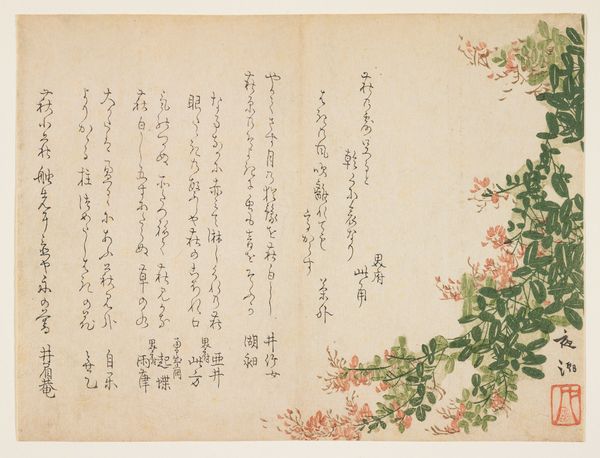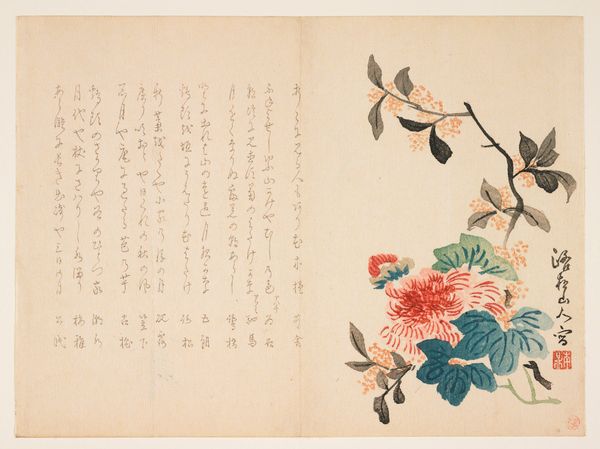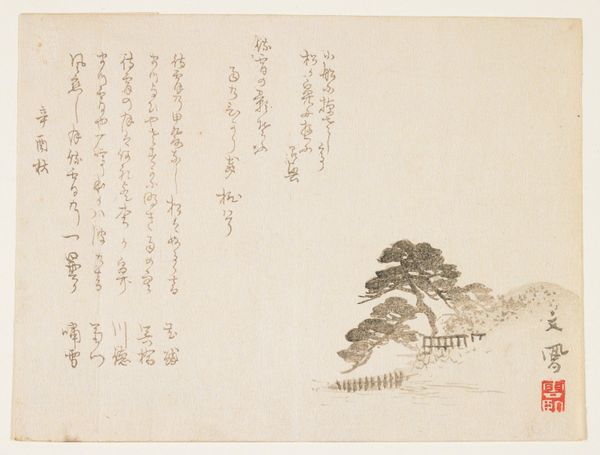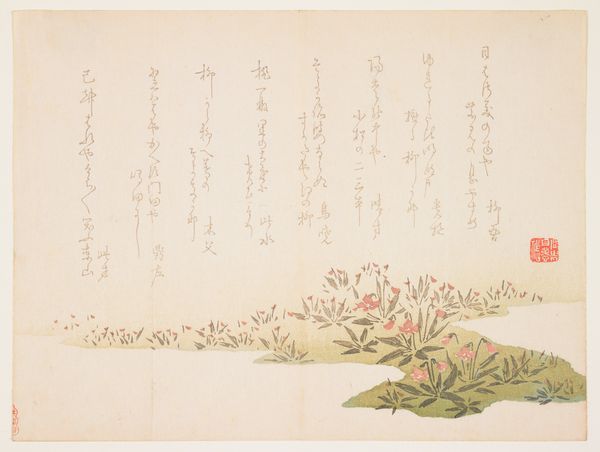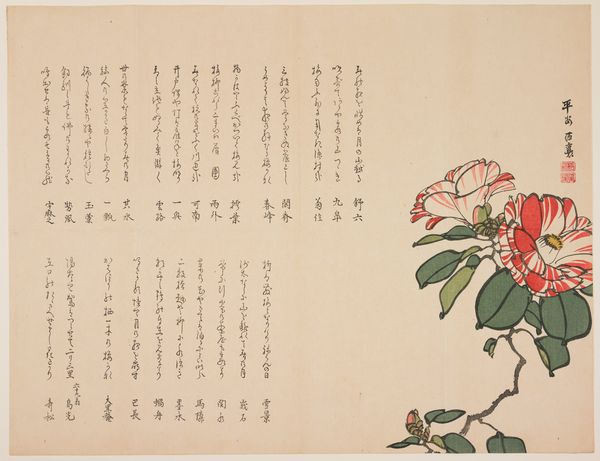
print, paper, watercolor, ink, color-on-paper
#
water colours
# print
#
landscape
#
ukiyo-e
#
japan
#
paper
#
watercolor
#
ink
#
color-on-paper
#
botanical drawing
#
botanical art
#
calligraphy
Dimensions: 15 x 19 1/4 in. (38.1 x 48.9 cm) (image, sheet)
Copyright: Public Domain
Curator: Before us, we have "Autumn Leaves and Pine Needles" crafted in 1821 by Matsumura Keibun. It’s an exquisite example of color-on-paper, currently residing at the Minneapolis Institute of Art. Editor: It evokes a profound sense of melancholy, doesn't it? The scattering of leaves, the delicate calligraphy – a real meditation on impermanence. Curator: Absolutely. The piece demonstrates Keibun's mastery of ink and watercolor techniques, particularly his meticulous rendering of botanical forms. The layered washes create depth, and I am interested in the materiality of color-on-paper at this period and its effects in this context. The pine needles are laid out linearly creating tension in a field of what might read to the eye as disorder or chaos. Editor: Agreed. It brings to mind broader themes of mortality and renewal, reflective of the Edo period’s cultural anxieties and the rise of natural disaster throughout the era. The deliberate arrangement of the leaves speaks to this. I can’t help but view this through the lens of Buddhist philosophy too. The floating leaf speaks to a sense of alienation in broader society at this moment, with no foundation from the other leaves. Curator: That is an intriguing point, when seen from a labor-oriented materialist perspective, how can we interpret this in the social dynamics surrounding art production during the Edo period? Who was involved in making and who was privileged enough to experience this form of consumption. I would like to know more about the socio-economic structure of ink making to further enhance the discourse here. Editor: Examining those production pathways sheds a new layer. In what ways, if any, does Keibun confront ideas of socioeconomic inequities in the text if read alongside visual analysis? This approach aligns with contemporary discussions about power and representation in art. What perspectives are not present here? Curator: True. And if we extend our lens outwards we could use this artwork as a way to create conversations that speak to sustainable practices when producing print arts at the time. Editor: Precisely! "Autumn Leaves and Pine Needles" is not merely a beautiful object; it becomes a nexus for understanding the complexities of Japanese society and culture. Curator: A work ripe for rediscovery through these contextual dialogues. Editor: A great synthesis, enriching our comprehension!
Comments
No comments
Be the first to comment and join the conversation on the ultimate creative platform.
